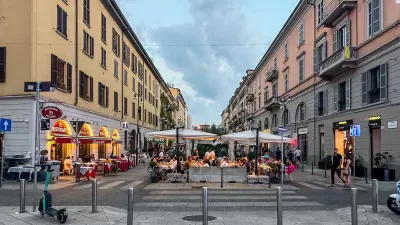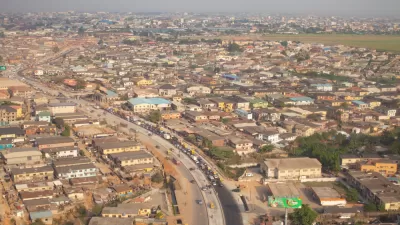In a globalized world, China's economic, environmental and urban development has implications for us all, posits Henry M. Paulson Jr. The problems the country faces, and any potential solutions, revolve around its approach to urbanization.
According to Paulson, the two pillars of growth that have driven China's economic emergence and global prosperity - investment and exports - are "delivering diminishing returns," He proposes that China adopt a new model for future success, “one that relies on consumption to generate growth, while addressing debt and broadening the use of sustainable energy and environmental practices.” Amid continued urbanization, the country's cities are key to this transformation.
Paulson highlights problems with China's local governance, construction industries and environmental factors, and illustrates how these affect the rest of world. For example, he points out, “[e]xperts found that dirty air from China contributed up to 20 percent of the ground-level pollution on the American West Coast in 2010.” China's air quality will only worsen as more of the hundreds of millions of Chinese consumers begin to own cars. To give a sense of its scale, Paulson writes, “[b]y 2025, China is projected to have a staggering 200 cities with populations over one million. America has just nine.”
For Paulson, cities are at the root of China's problems, as well as the source for solutions, especially now, as it experiences “its most severe economic downturn in decades." Chinese cities are home to hundreds of millions of consumers, often plagued by “debt, corruption and dissent," and responsible for producing “monster traffic jams and syrocketing pollution,” he explains. But, if China embraces new approaches and tools, including "instruction in sustainable practices for government leaders, public education in environmental issues and specialized training for the country’s urban planners,” it may be able to address the many issues it faces as it continues to urbanize.
FULL STORY: How Cities Can Save China

Coming Soon to Ohio: The Largest Agrivoltaic Farm in the US
The ambitious 6,000-acre project will combine an 800-watt solar farm with crop and livestock production.

Pennsylvania Mall Conversion Bill Passes House
If passed, the bill would promote the adaptive reuse of defunct commercial buildings.

U.S. Supreme Court: California's Impact Fees May Violate Takings Clause
A California property owner took El Dorado County to state court after paying a traffic impact fee he felt was exorbitant. He lost in trial court, appellate court, and the California Supreme Court denied review. Then the U.S. Supreme Court acted.

Colorado Bill Would Tie Transportation Funding to TOD
The proposed law would require cities to meet certain housing targets near transit or risk losing access to a key state highway fund.

Dallas Surburb Bans New Airbnbs
Plano’s city council banned all new permits for short-term rentals as concerns about their impacts on housing costs grow.

Divvy Introduces E-Bike Charging Docks
New, circular docks let e-bikes charge at stations, eliminating the need for frequent battery swaps.
City of Costa Mesa
Licking County
Barrett Planning Group LLC
HUD's Office of Policy Development and Research
Mpact Transit + Community
HUD's Office of Policy Development and Research
Tufts University, Department of Urban and Environmental Policy & Planning
City of Universal City TX
ULI Northwest Arkansas
Urban Design for Planners 1: Software Tools
This six-course series explores essential urban design concepts using open source software and equips planners with the tools they need to participate fully in the urban design process.
Planning for Universal Design
Learn the tools for implementing Universal Design in planning regulations.


























